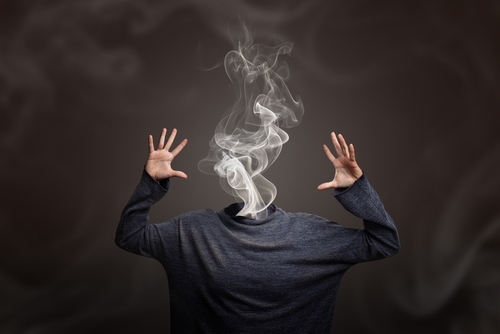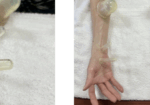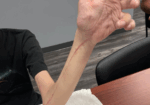Why Burnout Happens in Hand Therapy and What We Can Do About It.
Filed under Occupational Therapy
Why Burnout Happens in Hand Therapy

There are several reasons why burnout can occur, this is especially true for healthcare workers.
- High Emotional Load
Many of our patients are recovering from traumatic injuries or surgeries. We guide them through frustration, fear, and slow progress. This emotional labor can add up, especially when outcomes are not always predictable and patient expectations are not met. - Productivity Pressures
Clinics often expect hand therapist to see a certain number of patients per day, chart thoroughly, and stay on top of administrative tasks. Clinics are also pressured by insurance companies and other payer sources to offer quality of care while reimbursement is lower. This push for high output can make us feel like we are sacrificing quality care or our own sanity to meet numbers. - Physical Strain
We use our hands, bodies, and posture all day long. Chronic musculoskeletal fatigue in our own bodies is common but often pushed aside to “keep going.” - Lack of Variety or Autonomy
Seeing similar diagnoses every day, using the same interventions, or being boxed into rigid treatment protocols can lead to boredom or a sense of professional stagnation. - Under-recognition
Hand therapists are specialists, but we are often misunderstood or under-appreciated within larger healthcare teams. That invisibility can take a toll over time.

What We Can Do About It
- Redefine Success
Shift focus from productivity metrics to patient impact. Celebrate small wins, whether it is a patient buttoning a shirt for the first time or expressing gratitude for your help. - Set Boundaries
Do not let documentation spill into your evenings. Say no to extra responsibilities when you are already stretched. Protect your off time fiercely. - Prioritize Ergonomics for Yourself
Adjust your workstation. Stretch between patients. Treat yourself like you treat your patients when it comes to preventing repetitive strain. - Diversify Your Work
Incorporate new techniques, teach a workshop, or collaborate with another discipline. Variety can reignite passion. - Find Community
Burnout thrives in isolation. Join hand therapy forums, peer mentorships, or professional groups. Being able to share openly with others who “get it” makes a huge difference. - Revisit Your “Why”
Go back to the beginning. Why did you become a hand therapist? What do you love most about your role? Reflecting on purpose helps re-anchor your mindset. - Know When to Pivot
Sometimes, burnout is a sign it is time for change. Whether it is a new clinic, a part-time role, or a step into education or business ownership, your skills are transferable and valuable.
Final Thought:
Burnout isn’t a personal failure, it is often a systemic issue. But we do have power over how we respond. As hand therapists, we are experts at restoring function and preventing long-term damage in others. We should apply that same care to ourselves.
1 Comment
Leave a Comment
More To Read
How to Strengthen the Intrinsics with Puttycise Tools:
How to strengthen the intrinsic with Puttycise tools
Read MoreTherapeutic Interventions and Contraindications of Cupping
By Kaylen Kallander Cupping therapy is used to apply negative pressure to a localized area of muscular or neurological pain to relieve nerve pressure and increase blood flow to an affected area. This modality is commonly used for athletes, but is also a frequent treatment in physical therapy, occupational therapy, or hand therapy. While cupping…
Read MoreArteriovenous Malformation (AVM hand)
By: Amalia Garcia Introduction After completing three weeks of my Level II hand therapy rotation, I have seen a wide variety of common upper extremity injuries such as carpal tunnel syndrome, distal radius fractures, mallet finger, flexor tendon lacerations, arthritis, and more. One condition that stood out to me was one that I hadn’t heard…
Read MoreIntrinsic Hand Strengthening with Puttycise Tools
We are always looking for ways of the intrinsic hand strengthening. It is easy to overlook the importance of these small but mighty muscles. They are essential to performing functional grasps patterns. They can become weak in a short period of time due to their small size. So, How does intrinsic strengthening work?! The Basics…
Read MoreSign-up to Get Updates Straight to Your Inbox!
Sign up with us and we will send you regular blog posts on everything hand therapy, notices every time we upload new videos and tutorials, along with handout, protocols, and other useful information.







Miranda, thank you for sharing and shedding light on this topic. it seems to be the unspoken elephant in the room. your tips are very helpful as is everything you and Josh share with hand therapists. Thanks for all you do for our profession.
best regards
Gina